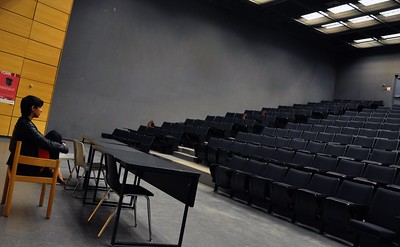Everywhere you look, there’s evidence of COVID-19’s impact on community colleges. Nationally, community college enrollment dropped by nearly 10%. Students were forced to leave campus. Revenues sank.
Several studies have shown that community college students tend to perform poorly in online classes. The impact of this goes beyond getting bad grades. Poor performance in online classes not only impacts future academic performance. It often results in community college students dropping out of school altogether. That’s a huge problem during a pandemic when online learning is the only available option.
Finances have also been a problem for two-year institutions. Community colleges received not one but two different rescue funding packages from the federal government. Both programs required them to use a portion of the funding for direct aid to students. That direct aid has come in many forms, including cash support; housing, food, transportation, and Internet subsidies; tuition grants; loan forgiveness; computer electronics and a host of other supports.
In Michigan, the State funded two different free community college programs for workers who remained on the job during the early part of the pandemic. Another program provides funding for older workers without a degree who want to pursue a degree or certificate. In Washington, lawmakers are working on a universal free community college program.
No one doubts the value of community colleges, especially following a recession. COVID-19 has, for the most part, sidelined community colleges this time around. Combined with the fact that post-secondary enrollment has dropped by an average of 300,000 students per year for the past five years. These losses can’t be attributed to college-age population declines. High school graduates are simply choosing not to enroll in college.
Online learning has been devastating for community colleges
Since 2020, many would-be college students have opted to join the workforce. Some are not ready to make an investment in a college education. Others intend to pursue vocational or occupational education degrees and cannot learn trade skills online. A growing number of students don’t see the value in a college degree. Still others are waiting out the pandemic.
The situation is a little more nuanced for community colleges. While recent high school graduates do comprise a significant portion of any given cohort, community colleges enroll students of all ages. The potential student pool for community colleges is far larger than the typical freshman class at a four-year university.
The point here is that COVID-19 has created significant challenges for community colleges. Communities, states and even the federal government are working tirelessly to support two-year colleges during the pandemic.
Unfortunately, all the cash subsidies in the world will not end the pandemic. Under those circumstances, why would two-year colleges NOT mandate the one intervention that will?
The sooner community colleges mandate vaccination, the sooner they can resume in-person operations safely. Anything less is unacceptable.
Photo Credit: zQ , via Flickr



































